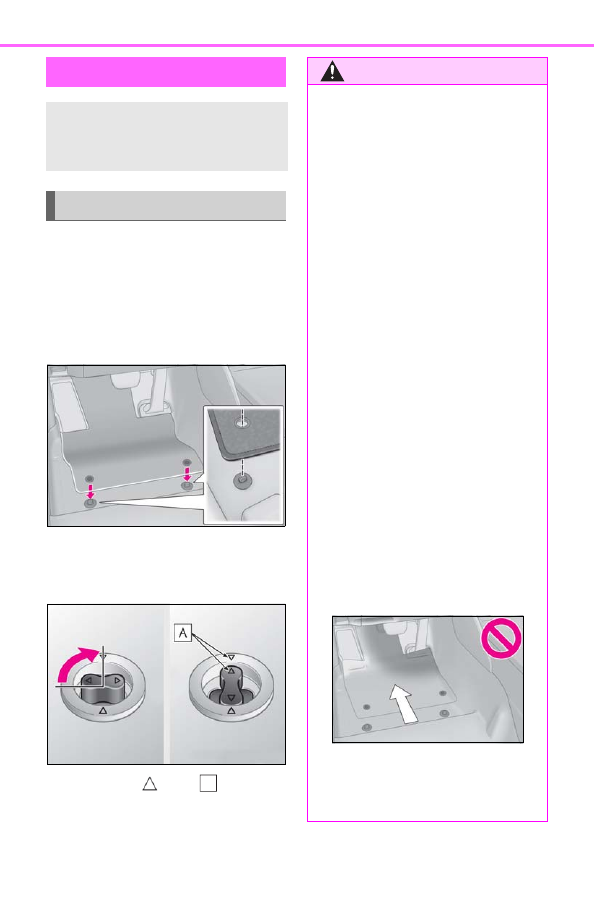LEXUS ES 350 (2019 year). Instruction - part 2

22
1-1. For safe use
1-1.For safe use
Use only floor mats designed specifi-
cally for vehicles of the same model
and model year as your vehicle. Fix
them securely in place onto the carpet.
1
Insert the retaining hooks (clips)
into the floor mat eyelets.
2
Turn the upper knob of each retain-
ing hook (clip) to secure the floor
mats in place.
Always align the
marks
.
The shape of the retaining hooks (clips)
may differ from that shown in the illustra-
tion.
Before driving
Observe the following before start-
ing off in the vehicle to ensure
safety of driving.
Installing floor mats
A
WARNING
Observe the following precautions.
Failure to do so may cause the driver’s
floor mat to slip, possibly interfering with
the pedals while driving. An unexpect-
edly high speed may result or it may
become difficult to stop the vehicle. This
could lead to an accident, resulting in
death or serious injury.
■
When installing the driver’s floor mat
●
Do not use floor mats designed for
other models or different model year
vehicles, even if they are Lexus Genu-
ine floor mats.
●
Only use floor mats designed for the
driver’s seat.
●
Always install the floor mat securely
using the retaining hooks (clips) pro-
vided.
●
Do not use two or more floor mats on
top of each other.
●
Do not place the floor mat bottom-
side up or upside-down.
■
Before driving
●
Check that the floor mat is securely
fixed in the correct place with all the
provided retaining hooks (clips). Be
especially careful to perform this
check after cleaning the floor.
●
With the engine stopped and the shift
lever in P, fully depress each pedal to
the floor to make sure it does not inter-
fere with the floor mat.